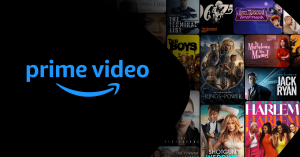(This piece contains some minor spoilers for the Netflix original movie To The Bone.)
Netflix’s original movie To The Bone was released over the weekend, an event which saw many parents, mental health professionals, and would-be viewers alike feeling trepidation. The film follows Ellen, a young woman struggling with anorexia, as she attempts to understand and overcome her illness alongside her peers and her family. The trailer for the film raised a few eyebrows when it was released, with many wondering if the film would inadvertently fall into the trap of glamorizing anorexia. In fact, actress Lily Collins spoke about receiving compliments on her body throughout filming from those who weren’t aware she was starving herself for the role.
Videos by PopCulture.com

With Netflix just recovering from the backlash against their graphic depictions of suicide (which may or may not have led to suicide ideation among viewers) in their series Thirteen Reasons Why, To The Bone seemed like a risky next move for the streaming giants. Luckily, it seems that they’ve learned from their mistakes this time around.
As Bonnie Brennan, Senior Clinical Director of Adult Services at Eating Recovery Center in Denver, CO told PopCulture.com, “This film raises more awareness and understanding about eating disorders than I have seen portrayed in popular television and film, especially in regards to family aspects and diversity of the eating disorder population.” Though she admits that inadvertently glamorizing the topic “is a risk with any film that tells a story about recovery,” she is optimistic about the film as a whole. “I am encouraged that it will actually save lives and help people and families get access to care that is needed,” she says.
It’s significant that this discussion of glamorizing eating disorders has swirled around the film from the beginning, in part because it’s something that the character Ellen grapples with herself— a sort of meta-commentary on eating disorders in the age of the internet. Ellen, as an artist whose work revolves around her anorexia, feels responsible for the death of one of her followers online after a suicide note cites her Tumblr. The subplot of Ellen’s art being “Tumblr famous” and used by anorexics as a trigger hits close to home; not only is Tumblr one of the platforms where “pro-ana” (short for pro-anorexia) groups continue to thrive, but the pro-ana groups of Twitter have lit up with conversation about To The Bone.
While much of the conversation has revolved around whether or not to watch the film (Bonnie Brennan advised that those who have struggled with disordered eating should “plan ahead before watching this film” in order to stay safe), a few individuals seemed to be actively seeking out the film to trigger a relapse. As well-done and carefully considered as the film is, there’s still some risk that it will be used as a tool to encourage self-harm. But as Brennan admitted, it can be almost impossible to try to remove all triggering stimulus from our society. “For those affected with eating disorders, there is so much exposure to things that could be risky just in everyday life,” she says.
Still, there are many things that the film gets right about disordered eating. In part because both Lily Collins and the film’s director, Marti Noxon, brought their real-life experiences with eating disorders to the table when working on the movie, Brennan notes that the movie shows “how an eating disorder functions in ways that most people would not understand unless they had an intimate connection to the illness.” The film also puts pressure on the misconception that eating disorders are for wealthy white women: “Eating disorders do not discriminate, and span across all age groups, genders, races, sexual orientations and socio-cultural types,” says Brennan.

The nuance with which anorexia and other eating disorders are explored lend credibility to the film and, in this writer’s opinion, keep it from becoming a spectacle. Indeed, the warning at the beginning of the film indicates that the movie was created “by and with individuals who have struggled with eating disorders”— and the film’s representation of the illness is clearly better for it. As Brennan told us, “the character’s use of anorexia as a way to ‘scare’ others, the sensuality of food, or the desperation in the family system” are nuanced elements of life with an eating disorder that are commonly left out of the media’s portrayals, which is something that can impair our understanding.
“Raising awareness, talking about challenges and broadening our understanding of the many faces of eating disorders is extremely important in regard to saving lives,” she says. Expanding the narrative around eating disorders in and of itself is a worthy goal. “When people who are affected by eating disorders speak up and ask for help, I consider that a win,” she says.
Thinking of watching To The Bone during your next Netflix night? Above all, it’s best to be prepared for what might be a disturbing or triggering experience. “Take into consideration that the film will likely evoke emotions, some that may be unwanted and painful. However, just because something may evoke emotions doesn’t mean that it should be avoided,” says Brennan. “Be intentional with your choice to view this film. Watch with someone else who can support you, write notes and have discussion later. Be curious about what you are reacting to and what your trigger points are,” she advises.
Beyond that, always know that there are resources available to support you, no matter what your reaction to the film. You can go to eatingrecovery.com for resources about eating disorders and treatment options—and if you notice someone in your life who may be struggling, reach out to them as well. “If a friend or family member is struggling it is recommended to find a neutral time and location to have a discussion about what you are noticing. Let the person know you care and are concerned for them,” says Brennan. From there, you can offer to contact someone who can better support them in their struggle, whether that be a therapist or a treatment center.
At its core, To The Bone is essentially an optimistic story—one of determination and strength, even in the darkest moments. Whether you decide to watch or not, it’s a personal decision that should be made with care. Remember, there’s no one who knows what’s right for you better than yourself.








